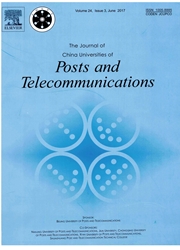

 中文摘要:
中文摘要:
Machine learning has a powerful potential for performing the template attack(TA) of cryptographic device. To improve the accuracy and time consuming of electromagnetic template attack(ETA), a multi-class directed acyclic graph support vector machine(DAGSVM) method is proposed to predict the Hamming weight of the key. The method needs to generate K(K ? 1)/2 binary support vector machine(SVM) classifiers and realizes the K-class prediction using a rooted binary directed acyclic graph(DAG) testing model. Further, particle swarm optimization(PSO) is used for optimal selection of DAGSVM model parameters to improve the performance of DAGSVM. By exploiting the electromagnetic emanations captured while a chip was implementing the RC4 algorithm in software, the computation complexity and performance of several multi-class machine learning methods, such as DAGSVM, one-versus-one(OVO)SVM, one-versus-all(OVA)SVM, Probabilistic neural networks(PNN), K-means clustering and fuzzy neural network(FNN) are investigated. In the same scenario, the highest classification accuracy of Hamming weight for the key reached 100%, 95.33%, 85%, 74%, 49.67% and 38% for DAGSVM, OVOSVM, OVASVM, PNN, K-means and FNN, respectively. The experiment results demonstrate the proposed model performs higher predictive accuracy and faster convergence speed.
 英文摘要:
英文摘要:
Machine learning has a powerful potential for performing the template attack(TA) of cryptographic device. To improve the accuracy and time consuming of electromagnetic template attack(ETA), a multi-class directed acyclic graph support vector machine(DAGSVM) method is proposed to predict the Hamming weight of the key. The method needs to generate K(K ? 1)/2 binary support vector machine(SVM) classifiers and realizes the K-class prediction using a rooted binary directed acyclic graph(DAG) testing model. Further, particle swarm optimization(PSO) is used for optimal selection of DAGSVM model parameters to improve the performance of DAGSVM. By exploiting the electromagnetic emanations captured while a chip was implementing the RC4 algorithm in software, the computation complexity and performance of several multi-class machine learning methods, such as DAGSVM, one-versus-one(OVO)SVM, one-versus-all(OVA)SVM, Probabilistic neural networks(PNN), K-means clustering and fuzzy neural network(FNN) are investigated. In the same scenario, the highest classification accuracy of Hamming weight for the key reached 100%, 95.33%, 85%, 74%, 49.67% and 38% for DAGSVM, OVOSVM, OVASVM, PNN, K-means and FNN, respectively. The experiment results demonstrate the proposed model performs higher predictive accuracy and faster convergence speed.
 同期刊论文项目
同期刊论文项目
 同项目期刊论文
同项目期刊论文
 Study of half-metallic ferromagnetism in V-doped CdTe alloys by using First-Principles calculations.
Study of half-metallic ferromagnetism in V-doped CdTe alloys by using First-Principles calculations. Design of terahertz band-stop filter based on a metallic resonator on high-resistivity silicon wafer
Design of terahertz band-stop filter based on a metallic resonator on high-resistivity silicon wafer 期刊信息
期刊信息
